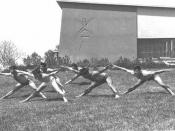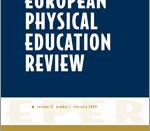The Validity of Academic Learning Time "ÃÂ Physical Education (ALT-PE) as a Process Measure of Achievement The concept of ALT-PE started in 1979 when authors Siedentop, Birdwell, and Metzler presented a paper at the annual American Alliance of Health, Physical Education, Recreation, and Dance. The premise of this paper was a process in which to measure the teacher effectiveness in physical education. They thought if there were ways to measure student achievement then there were ways also to measure teacher effectiveness. This paper conjured new ways of looking at Physical Education. ALT-PE was generally modeled after the Academic Learning Time instument developed as a part of the Beginning Teacher Evaluation Study (BTES). The Beginning Teacher Evaluation Study was most notable for its results in how much time the student spent in actual appropriate practice.
The purpose of this study was to prove that Academic Learning Time "ÃÂ Physical Education is valid.
They took a large database that included a pretest and a posttest for two volleyball skills and videotaped instruction was used for this study.
Subjects: They included students from 10 physical education classes. From this group, there were a total of 42 student observations.
Skill Testing: Students were pretested and posttested on the volleyball serve test and the forearm pass test.
Instruction: Instruction took place over seven consecutive days as part of the regularly scheduled PE class. All the class sessions were videotaped for reference and the teachers were told to make the best use of their time in order for maximum student improvement for the two skills being tested.
ALT-PE Data Collection: All the ALT-PE data was collected by viewing the videotapes. In all 42 student observations had been made.
Data Analysis: Achievement Data: For the entire sample a posttest on pretest regression equation was determined. If a student did better than predicted at the end then they received a positive residual score at the end, but if a student did poorer than predicted at the end then they received a negative residual score at the end.
Process Data: The summing of the scores were separated into two different categories so that the serve and the forearm pass were separately graded. The percent of the intervals were also calculated.
Statistical Analysis: The ALT-PE study summed interval and percentage data correlated for each skill separately with the student's residual achievement score.
Results: As they thought, positive achievements were found in motor skills due to appropriate practice of the serve and the forearm pass.





